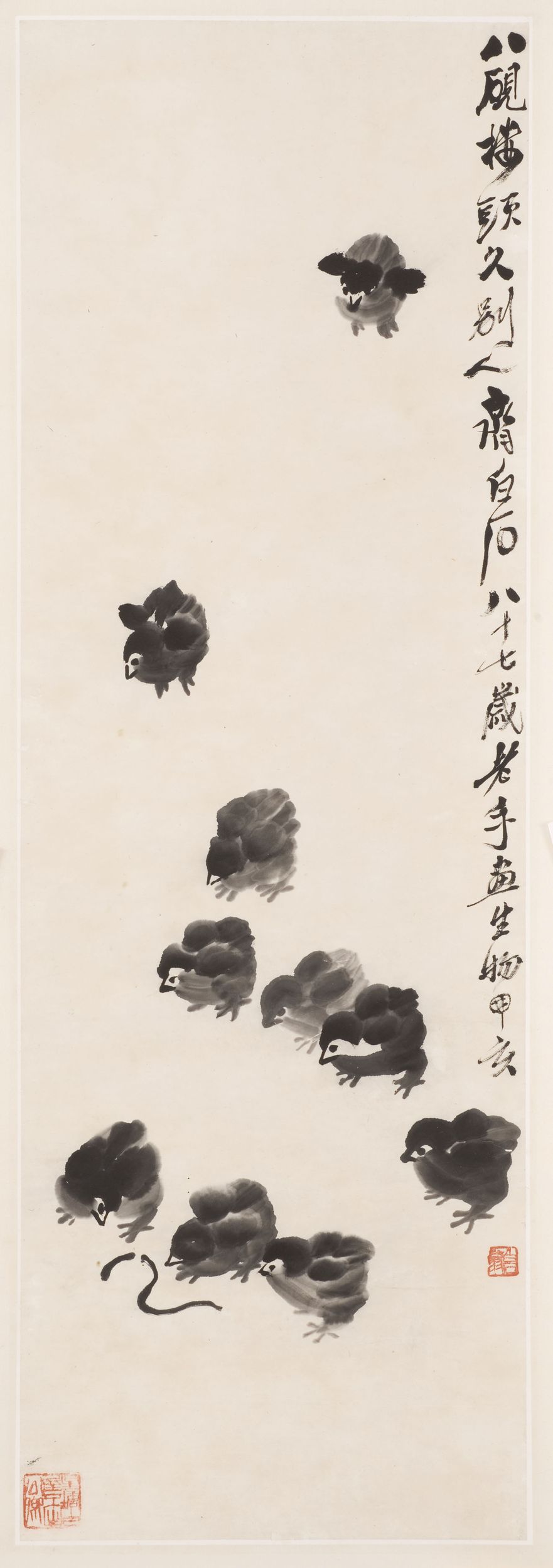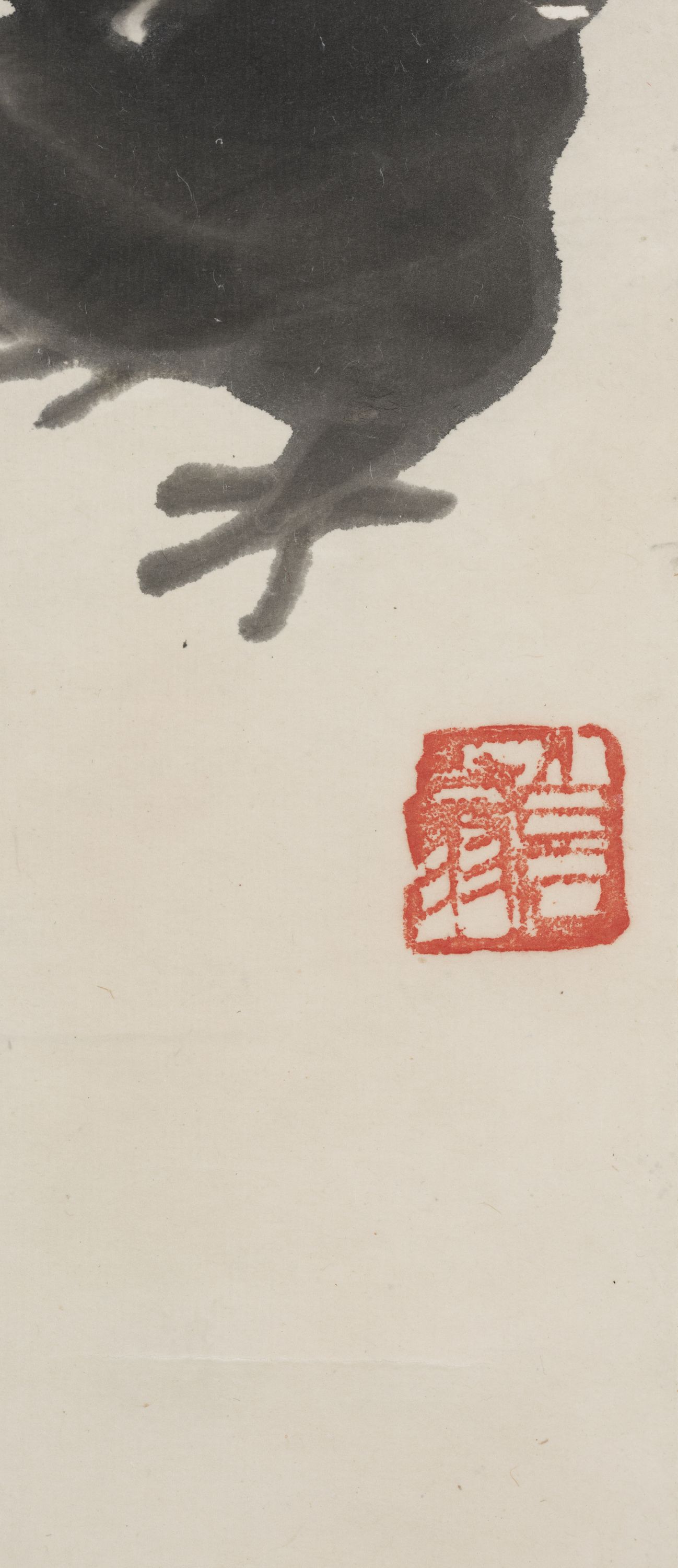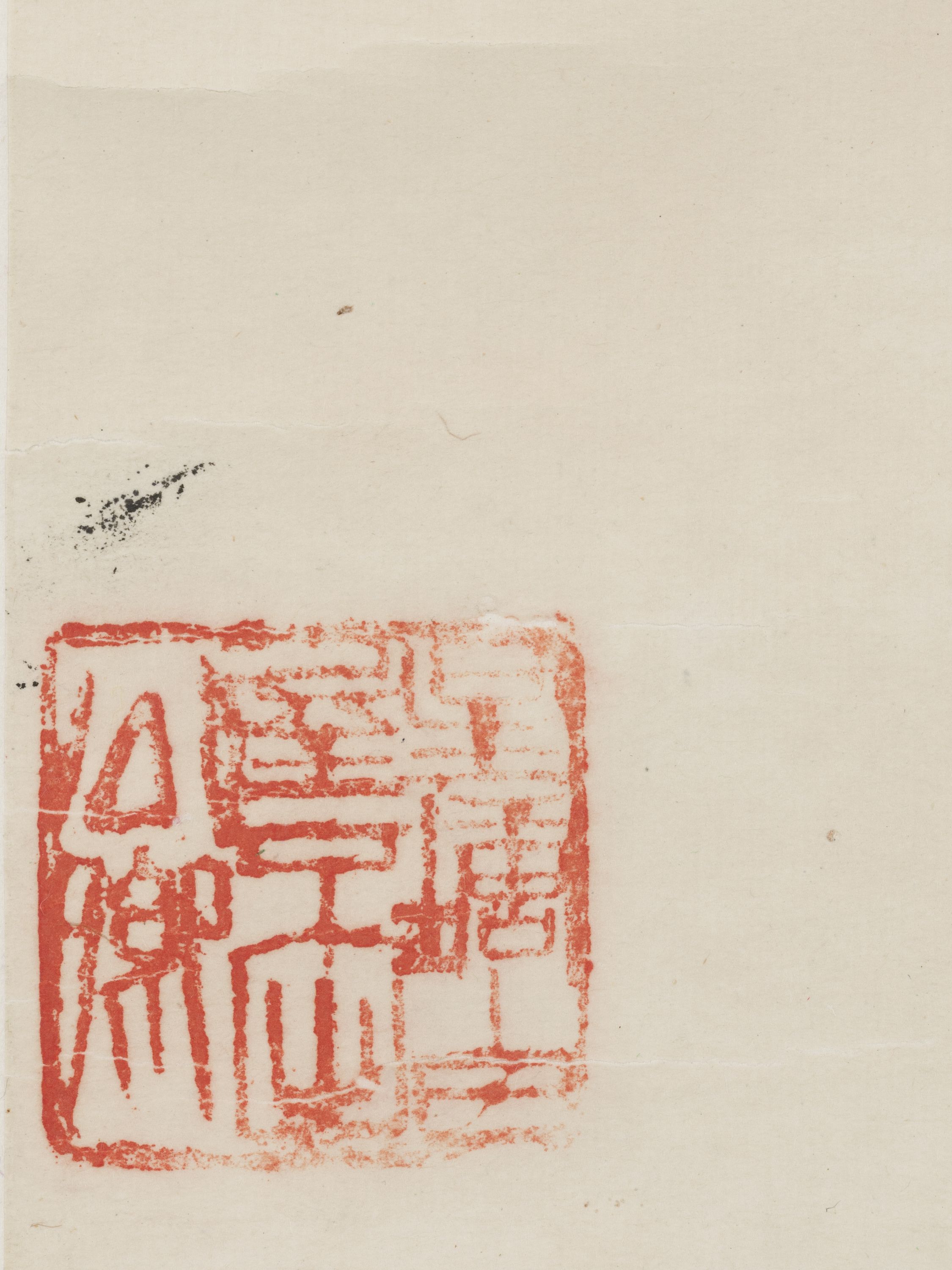
Petits poussins
Papier, Encre
Peinture
白石翁; 星塘白武不出公卿
Don manuel : Guo, Youshou 郭有守, Docteur
M.C. 8726
Qi Baishi was born in the village of Xingdou Tang in Xiangtan district, Hunan, into a modest family. He learnt the wood engraving trade as a teenager, a craft whose traditional, particularly floral decorative vocabulary he appropriated in his later work. At the end of his apprenticeship, he taught himself to paint, using models from the painting manual Jiezi yuan huachuan, while exercising his profession as wood engraver. After studying portrait technique with Xiao Zhuanxin, he established himself as a portraitist in 1889. The same year, he became the pupil of Hu Qinyuan (?-1914), from whom he learnt the precise technique of gongbi. He used these qualities to best effect in his paintings of insects and flowers, with which he continued to experiment from 1895 until he settled in Beijing in the 1920s. From 1902 to 1909 his travels took him to various different regions and cities including Xi’an, Beijing, Guilin and Canton. The works he saw and the people he met during these journeys led him to adopt new models, such as Zhu Da (1626-1705), Jin Nong (1687-1764) and Xu Wei (1521-1593) for painting, and Zhao Zhiqian (1829-1884) for seal carving. These influences contributed to the development of his style, which became freer and less meticulous. But it was only when he moved to Beijing in 1917, after meeting Chen Shizeng, that he would move towards what would emerge as personal style. Qi Baishi was encouraged to take as his model Wu Changshuo, perhaps in view of the esteem in which the work and influential writings of the master of the Shanghai School were held by Cheng Shizeng and by members of his entourage such as Chen Banding and Yao Hua.
At the end of what Qi Baishi called “artistic reform at an advanced age”, he soon gained prominence on the national art scene. On a formal level, the originality of his compositions, energy of his brushwork and bold use of colours characterised the works of this period. But the direct simplicity of his art also corresponded to the rustic and sometimes humorous nature of his painting. After the revolution of 1949, he was considered the foremost representative of traditional Chinese painting.
The four paintings donated to the Cernuschi Museum by Guo Youshou form a group that is characteristic Qi Baishi’s maturity. These works constitute a perfect introduction to his painting, beyond their sensitive allusions, in the catfish, for example, which evokes the painting of Zhu Da. Captured in the spontaneity of their movements, the animals sometimes have a symbolic meaning, like the brood of chicks hopping cheerfully in all directions and the crow picking at the watermelon. The combination of the catfish, nianyu, and the arctic char, guiyu, correspond to the good-wish phrase chang nian da gui, in which two of the terms are phonetic equivalents of the fish names. A concrete poetry typical of Qi Baishi emanates from his illustrations of such well-known phrases.



